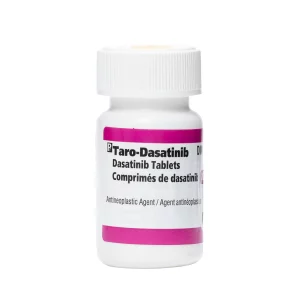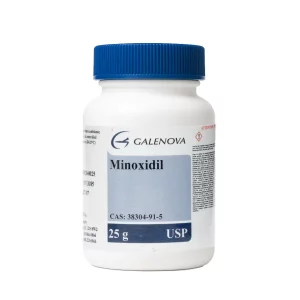Your cart is empty.
Your cart is empty.
Dasatinib is a medication originally developed to treat certain types of leukemia. It works by targeting abnormal proteins that help cancer cells grow and divide uncontrollably. The term mechanism of action refers to how a drug works in the body to produce its effects. While dasatinib was first made for cancer treatment, researchers are now studying its potential in longevity science and brain health.
This growing interest in Dasatinib brain health and its role in aging has prompted questions about how does dasatinib work and whether it could have benefits beyond cancer care. Additionally, people are curious about the best time to take Dasatinib for these new purposes.
Dasatinib is a type of drug known as a tyrosine kinase inhibitor. Tyrosine kinases are enzymes, special proteins inside cells, that send signals telling cells to grow and multiply. When these proteins are overactive or abnormal, they can cause cancer cells to grow out of control.
Dasatinib was developed in the early 2000s and approved by medical authorities to treat two main types of blood cancers: chronic myeloid leukemia (CML) and Philadelphia chromosome-positive acute lymphoblastic leukemia (ALL). These cancers involve specific genetic changes that make tyrosine kinases hyperactive. By blocking these proteins, dasatinib helps stop the growth of cancer cells.
Since its approval, dasatinib has become a key drug for patients who do not respond well to older treatments like imatinib. Its ability to target multiple proteins makes it a powerful option in fighting disease.

To better understand dasatinib mechanism of action, it helps to review the role of tyrosine kinases. These proteins act like switches inside cells, turning on signals that control cell division and survival. In healthy cells, this process is tightly regulated.
In certain leukemias, abnormal proteins such as the BCR-ABL fusion protein cause the tyrosine kinase switch to be permanently “on,” driving uncontrolled cell growth. Dasatinib binds to these kinases and blocks their activity, effectively turning the switch “off.”
Unlike some drugs that target a single protein, dasatinib works on multiple tyrosine kinases at once. This broad activity helps it overcome resistance caused by mutations and attack several pathways involved in cancer progression.

Here’s a simple breakdown of how dasatinib works after you take it:
This cellular-level action is the core of dasatinib’s potential beyond cancer treatment.
As we age, many cells become senescent, meaning they stop dividing but don’t die when they should. These cells release harmful substances that cause chronic inflammation and contribute to aging and disease.
Scientists call drugs that remove these senescent cells senolytics. Dasatinib is one such senolytic, especially when combined with other compounds like quercetin. Together, they help clear out these aged cells and reduce inflammation in tissues. This senolytic effect has sparked interest in dasatinib’s use for promoting healthy aging and longevity.
Beyond its approved use in leukemia, dasatinib is being studied for:
Some studies are also investigating the role of Dasatinib brain health and cognitive function. While these findings are early, they suggest dasatinib could one day help maintain mental clarity and reduce cognitive decline.
Researchers emphasize that these uses are still experimental and not proven treatments, but the potential is promising.
Typically, dasatinib is taken once daily as an oral tablet. For cancer treatment, dosing follows specific clinical guidelines. However, for longevity or anti-aging research, dosing protocols vary widely.
For those exploring longevity purposes, experts still debate the best time to take dasatinib and how often it should be used. Some recommend taking it in the morning to align with natural body rhythms, while others suggest evening dosing. The optimal timing and frequency remain under study. Because of potential risks and variable dosing, medical supervision is essential for anyone considering dasatinib for off-label purposes.
Key Benefits Explored in Research
Scientists are currently studying several possible benefits of dasatinib beyond cancer, including:
These benefits focus on improving long-term health rather than providing immediate effects.
Originally, yes. But now, it is also being explored for aging and brain health because of its senolytic properties.
Research is ongoing, especially regarding its ability to clear senescent cells. However, these applications are still experimental.
Its broad action on multiple tyrosine kinases and ability to clear senescent cells set it apart from many other drugs.
This should only be done under strict medical supervision, preferably as part of a clinical study.
It blocks signals inside cells that tell them to grow, helping stop abnormal or aged cells from spreading.
Because it may clear out aged cells that cause inflammation and tissue damage as people get older.
Clinical trials are still investigating this, and it is not yet approved for general use in healthy individuals.
There is no established dosage. Studies vary, so always consult a healthcare provider before use.
Dasatinib is no longer just a cancer drug. With its abilities to target multiple kinases and clear senescent cells, it offers a novel direction for longevity and wellness science. Early research points to benefits in reducing inflammation and supporting tissue health, but we still need more data, especially in healthy adults.
Its potential to support Dasatinib brain health and improve cognitive function is particularly exciting, as brain aging remains a major concern for many. However, this is still a developing field, and ongoing clinical trials will clarify how best to use dasatinib safely and effectively. Until more is known, dasatinib remains an investigational option that should only be used under professional medical supervision.
If you are curious about dasatinib’s potential beyond cancer, stay informed about new research and clinical trials. As science advances, this drug may become a useful tool in supporting healthier aging and cognitive wellness.
Climent, N., & Plana, M. (2019). Immunomodulatory activity of tyrosine kinase inhibitors to elicit cytotoxicity against cancer and viral infection. Frontiers in Pharmacology, 10, 1236.
https://pubmed.ncbi.nlm.nih.gov/31680987/
Gupta, A., Nadaf, A., & Ahmad, F. J. (2023). Dasatinib: A potential tyrosine kinase inhibitor to fight against multiple cancer malignancies. Medical Oncology, 40(2), 54.
https://pubmed.ncbi.nlm.nih.gov/37165283/
Kumar, V., Singh, P., & Gupta, S. K. (2022). Transport and metabolism of tyrosine kinase inhibitors associated with chronic myeloid leukemia therapy: A review. Molecular and Cellular Biochemistry, 477(2), 511–524.
https://pubmed.ncbi.nlm.nih.gov/35129779/
Liu, J., et al. (2016). Distinct dasatinib‑induced mechanisms of apoptotic response in imatinib‑resistant human CML cells. International Journal of Molecular Sciences, 17(4), 531.
https://pmc.ncbi.nlm.nih.gov/articles/PMC4848987/
Novais, E. J., et al. (2021). Long‑term treatment with senolytic drugs ameliorates age‑dependent tissue degeneration in mice. Nature Communications, 12, 5216.
https://pubmed.ncbi.nlm.nih.gov/34480023/


Acarbose blocks carbohydrate breakdown in the small intestine, preventing rapid glucose absorption spikes.

Dasatinib eliminates senescent cells through selective apoptosis, clearing age-damaged tissues from the body.

Metformin inhibits hepatic glucose production while enhancing insulin sensitivity, offering cost-effective Type 2 diabetes management.

Minoxidil dilates scalp blood vessels, increasing nutrient delivery to hair follicles while extending the anagen growth phase duration.
Unlock savings on bundles and elevate your online experience today!